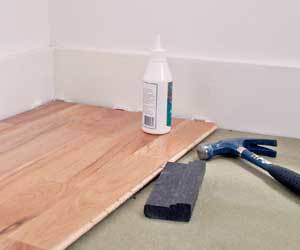Triangulo Hardwood Flooring
is environmentally conscious, in addition to committed to making a
beautiful, quality product. Not only have they received their CARB Phase
II certificate, but their Tecpar Certificate, their Triângulo FSC
certificate, and their Forest FSC certificate as well.
Triangulo Hardwood flooring comes in Exotic Solid wood flooring and in Engineered Hardwood flooring lines.
Triangulo Exotic Solid wood flooring is made with 3/4″ thick solid wood, and you can find this flooring assembled with tongue and groove sides. Note that the random nature of Triangulo Hardwood flooring’s exotic solid hardwood flooring will ensure that your flooring will not look like your neighbor’s floor.

As many as 9 coats of aluminum oxide will coat your beautiful Triangulo Exotic Solid wood flooring to ensure that your flooring will last throughout the ages, in addition to enhancing the wood’s natural beauty. One advantage that the solid wood flooring carries is the ability to be re-sanded and refinished over many years. Your floor may even outlast your home!
Some of the woods that are available through the Triangulo Exotic Solid wood flooring line include Brazilian Cherry (Jatoba), Tigerwood, Brazilian Chestnut, Amendoim, and Brazilian Teak. The Brazilian Cherry, Tigerwood, Brazilian Chestnut, and Amendoim can be found in 3.25″ widths, the Brazilian Teak comes in 3″ widths, and the Brazilian Cherry, Tigerwood, & Brazilian Chestnut can also be found in 5″ widths.
Triangulo Hardwood Flooring’s Engineered Flooring line has top of the line processes in place to make their engineered flooring the best in the industry. Each under layer is made of real wood (or plies) and is glued under pressure in different directions for maximum strength and long-lasting durability.

This way of constructing engineered flooring makes it a more stable choice over solid hardwood flooring. Unlike solid hardwood flooring, Triangulo Engineered Flooring line is resistant to the shrinkage and expansion caused by environmental conditions, and you can install these floors over a mature concrete slab. You can find this type of flooring in the following species: Amendoim, Brazilian Cherry (Jatoba and Royal Jatoba), Brazilian Chestnut, Brazilian Pecan, Brazilian Pecan (Coca), Brazilian Walnut, and Tigerwood. All species are available in the .5″ x 5.25″ and 3/8″ x 3.25″, however, only the Amendoim, Brazilian Cherry, Brazilian Chestnut, Brazilian Walnut, and Tigerwood is available in the 5/16″ x 5″ sizes.
Triangulo Hardwood flooring comes in Exotic Solid wood flooring and in Engineered Hardwood flooring lines.
Triangulo Exotic Solid wood flooring is made with 3/4″ thick solid wood, and you can find this flooring assembled with tongue and groove sides. Note that the random nature of Triangulo Hardwood flooring’s exotic solid hardwood flooring will ensure that your flooring will not look like your neighbor’s floor.

As many as 9 coats of aluminum oxide will coat your beautiful Triangulo Exotic Solid wood flooring to ensure that your flooring will last throughout the ages, in addition to enhancing the wood’s natural beauty. One advantage that the solid wood flooring carries is the ability to be re-sanded and refinished over many years. Your floor may even outlast your home!
Some of the woods that are available through the Triangulo Exotic Solid wood flooring line include Brazilian Cherry (Jatoba), Tigerwood, Brazilian Chestnut, Amendoim, and Brazilian Teak. The Brazilian Cherry, Tigerwood, Brazilian Chestnut, and Amendoim can be found in 3.25″ widths, the Brazilian Teak comes in 3″ widths, and the Brazilian Cherry, Tigerwood, & Brazilian Chestnut can also be found in 5″ widths.
Triangulo Hardwood Flooring’s Engineered Flooring line has top of the line processes in place to make their engineered flooring the best in the industry. Each under layer is made of real wood (or plies) and is glued under pressure in different directions for maximum strength and long-lasting durability.

This way of constructing engineered flooring makes it a more stable choice over solid hardwood flooring. Unlike solid hardwood flooring, Triangulo Engineered Flooring line is resistant to the shrinkage and expansion caused by environmental conditions, and you can install these floors over a mature concrete slab. You can find this type of flooring in the following species: Amendoim, Brazilian Cherry (Jatoba and Royal Jatoba), Brazilian Chestnut, Brazilian Pecan, Brazilian Pecan (Coca), Brazilian Walnut, and Tigerwood. All species are available in the .5″ x 5.25″ and 3/8″ x 3.25″, however, only the Amendoim, Brazilian Cherry, Brazilian Chestnut, Brazilian Walnut, and Tigerwood is available in the 5/16″ x 5″ sizes.













 sion caused by humidity and heat, and cover the gap with baseboard moulding.
sion caused by humidity and heat, and cover the gap with baseboard moulding. 









